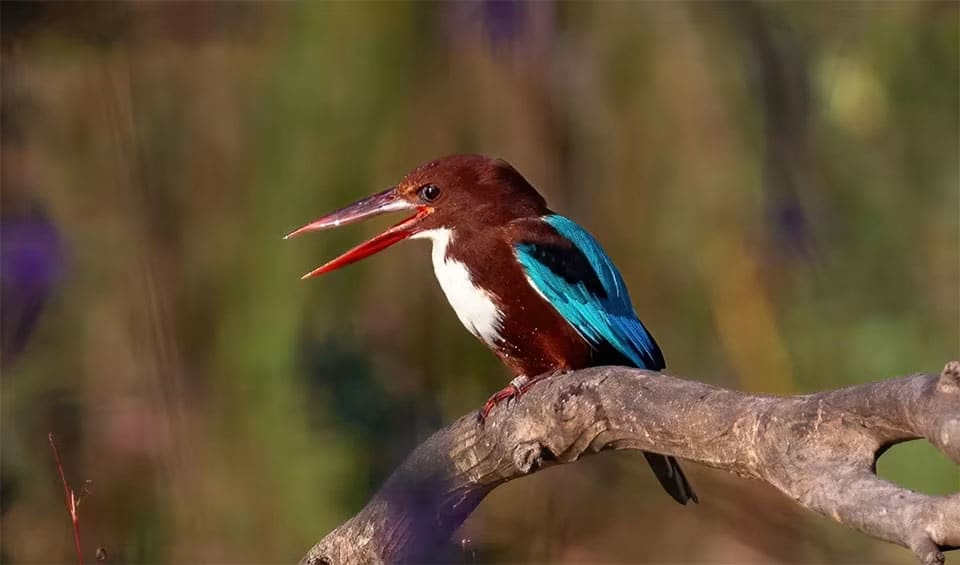It is renowned for its adaptability and widespread distribution across diverse habitats throughout Asia and parts of the Middle East. These adaptable birds can be found in a variety of environments, ranging from lush woodlands and verdant farmlands to bustling urban areas. They are equally at home near water bodies such as rivers, lakes, and ponds, where they demonstrate their expert fishing skills.
Despite its name, the diet of the White-throated Kingfisher extends far beyond fish alone. While they are indeed skilled fish hunters, they also have a varied palate that includes insects, crustaceans, small reptiles, and even small mammals. This diverse diet reflects the bird’s opportunistic feeding behavior and its ability to exploit a wide range of prey species within its habitat.
One of the most striking characteristics of the White-throated Kingfisher is its vibrant plumage, which features a dazzling array of colors. The bird’s upperparts are adorned with shades of deep blue and rich chestnut, while its underparts are a stunning combination of white and orange. This striking coloration serves both aesthetic and practical purposes, providing camouflage in its natural habitat while also attracting potential mates during the breeding season.
White-throated Kingfishers are highly territorial birds, fiercely defending their territory from intruders, especially during the breeding season. They are often observed perched on high vantage points, such as tree branches or utility wires, from where they can keep a watchful eye on their surroundings and detect potential prey.
Distribution
 Afghanistan
Afghanistan Azerbaijan
Azerbaijan Bangladesh
Bangladesh Bhutan
Bhutan Bulgaria
Bulgaria Cambodia
Cambodia China
China Cyprus
Cyprus Egypt
Egypt Greece
Greece Hong Kong
Hong Kong India
India Indonesia
Indonesia Iran
Iran Iraq
Iraq Israel
Israel Jordan
Jordan Kuwait
Kuwait Laos
Laos Lebanon
Lebanon Macao
Macao Malaysia
Malaysia Myanmar
Myanmar Nepal
Nepal Pakistan
Pakistan Qatar
Qatar Saudi Arabia
Saudi Arabia Singapore
Singapore Sri Lanka
Sri Lanka Syria
Syria Taiwan
Taiwan Thailand
Thailand Turkey
Turkey UAE
UAE Vietnam
VietnamAnything we've missed?
Help us improve this page by suggesting edits. Glory never dies!
Suggest an editGet to know me
Terrestrial / Aquatic
Altricial / Precocial
Polygamous / Monogamous
Dimorphic (size) / Monomorphic
Active: Diurnal / Nocturnal
Social behavior: Solitary / Pack / Herd
Diet: Carnivore / Herbivore / Omnivore / Piscivorous / Insectivore
Migratory: Yes / No
Domesticated: Yes / No
Dangerous: Yes / No




